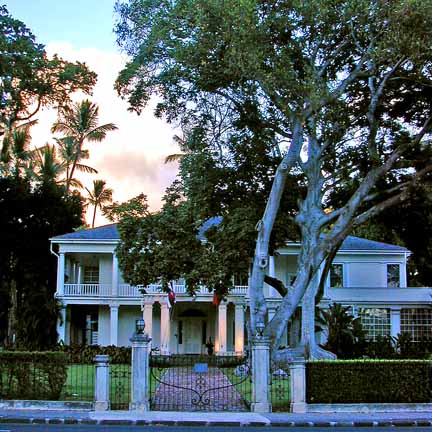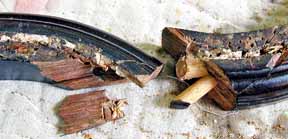Washington Place
|
||
|
The State Dining Room at Washington Place is furnished with a sideboard, twenty-two side chairs, two armchairs, and a dining table, which held fourteen leaves when fully extended. All pieces** were made by the Luce Furniture Company of Grand Rapids, Michigan. Condition: Additional termite damage and broken areas on the chairs were revealed upon removal of the upholstery. Examination of the tack strips indicate at least four campaigns of upholstery had been performed. The damage caused by the tacks and staples further split and cracked the seat frames, each time, successively covering more of the seat rails until finally completely covering them. |
||
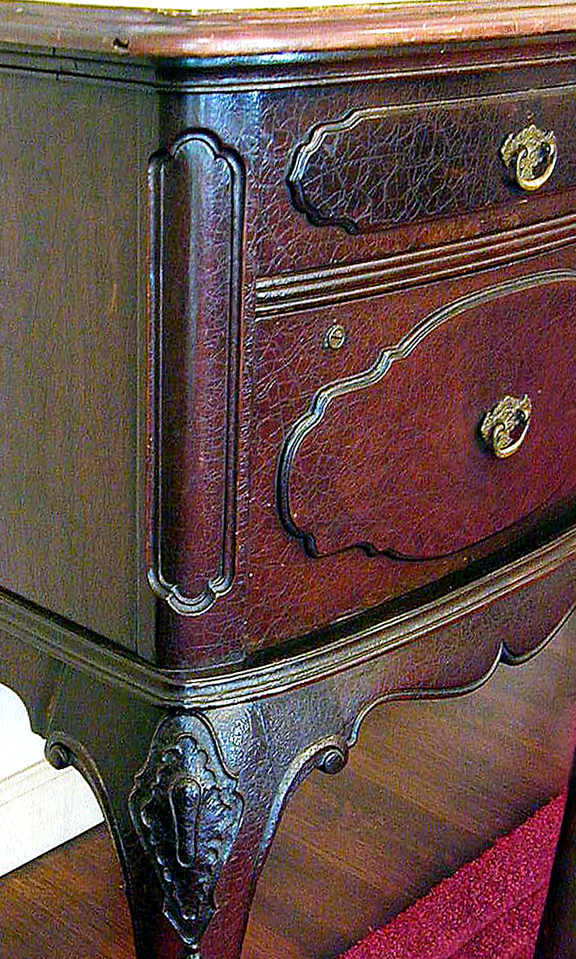
Badly cracked finish layers on buffet and collapsed termite damage to top corner. |
||
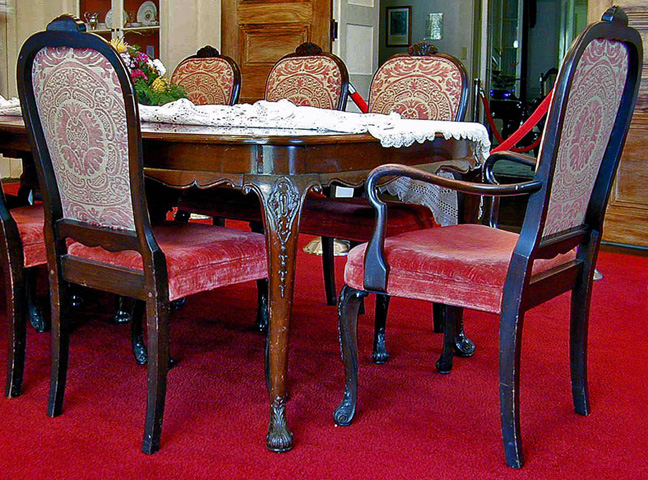
Abrasions/chipped finish and color mismatches on table and chairs. |
||
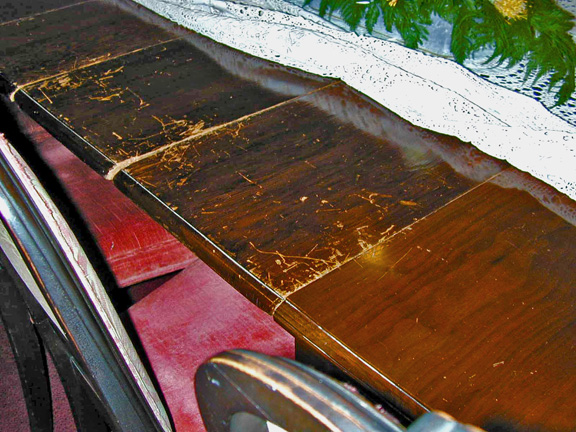
Badly worn tops of dining chairs and table leaves. |
||
Breakage and old repairs typical on chairs |
||
|
|
||
|
Treatment: Due to the poor condition and lack of original surfaces, Washington Place curation concluded that complete removal of finish with repairs, replacement of unstable fills and refinishing would best achieve desired goals. All upholstery was removed from chairs. Unstable pieces completely or partially disassembled as necessary. Damaged sections repaired/rebuilt. All loose and/or inappropriately applied “wood dough” fill materials and various adhesive residues from joint faces were removed. Termite eaten areas filled as necessary with a phenolic and silica microballoon bulked and tinted epoxy resin mixture. Cracked and split sections repaired as necessary with tinted epoxy resin. It was necessary to fabricate and completely replace some sections due to extensive termite damage and/or inappropriate and unstable previous repairs. Termite eaten dowels were replaced as necessary and the reassembly of rebuilt joinery sections (joints) done with hot hide glue. All of the fourteen existing ten inch wide leaves were extensively damaged along edges with surfaces deeply scratched; most were somewhat warped and no longer registered together correctly when closed. The table leaf extension mechanism was loose/worn, and no longer opened evenly. Central table leg extension supports were loose and inadequately supported table when all leaves were installed. A total of ten 20 inch wide leaves and four solid walnut table legs were fabricated to fit the table. A custom built solid wood and geared metal extension set was added allowing table to accommodate all leaves. Fabrication of new walnut leaves, legs and installation of new table leaf extension mechanism performed by Mr. James T. Ferla, representing Classic Concepts. |
